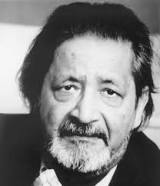The quest narrative is one of the oldest and surest ways of telling a story. The Odyssey is essentially a quest narrative, with Odyssey’s journey back to his wife and son serving as the basis for the quest.

The form of a quest narrative is simple. Basically, the author descibes his or her desire to do something, see something, experience something, discover something.
In describing the object of the quest, whether a grail, or castle or insight or pot of gold, it’s helpful to “sell” the quest, emphasizing why it’s important either to the writer or the reader. Since the writer is the reader’s surrogate, describing why you want to go to Rome is often enough, especially if you can make it seem an especially appealing destination.
Some quests are so compelling they don’t need to be sold: the quest to find the Green River Killer or a cure for cancer.
The description of the goal for the quest encourages a sense of seeking, questioning and curiosity, propelling readers forward into the narrative. It gives a structure and suspense to a piece that might otherwise be flat and static.
This is a very adaptable form, appropriate to all kinds of subjects, whether personal essays, travel pieces, investigative journalism, memoir.
You can write a quest narrative about seeking to find the perfect peach, or the perfect glass of Pinot Noir wine, or about coming to terms with your parents. The quest narrative can be used effectively in many different contexts.
The form fits very well with James Stewart’s emphasis on curiosity as the basis of fine nonfiction writing in Follow the Story. The description of the quest immediately poses a quest in the reader’s mind: will the author or narrator achieve the quest?
Quest narratives can be written in a number of points of view. First person is probably most common in nonfiction, but third person can also be used, as in the description of a scientist searching for a cure for the common cold.
- Describe the object of the quest and why it’s important. You don’t have to start the story with this statement, but it should come near the beginning, explaining why you’ve arrived in New Guinea, for example.
- Set out on the quest. What do you bring? How do you prepare?
- Describe the journey and the difficulties of achieving it.
- Describe whether you achieve the goal or not.
All best,
Nick O’Connell
The Writer’s Workshop
 The Writer's Workshop
The Writer's Workshop 











